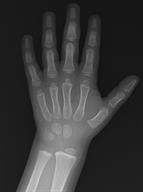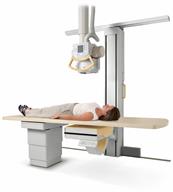X-Rays: What to Expect

X-rays are pictures of the inside of your body. An X-ray machine makes these pictures using waves of energy called radiation. Bones and tissues in your body take in different amounts of radiation, which show up on the X-ray pictures in shades of black, gray, and white.
X-rays can be used to check for many health problems. Health care providers may use them to look for problems like broken bones, lung problems, and some types of cancer.
Tell a health care provider about:
-
Any allergies you have.
-
All medicines you take. These include vitamins, herbs, eye drops, and creams.
-
Any surgeries you've had.
-
Any medical conditions you have.
-
Any medical devices you have in your body.
-
Whether you're pregnant or may be pregnant. If so, talk to your OB/GYN before getting an X-ray. You may need to take some safety measures, such as placing a special apron over your belly to protect the baby.
What are the benefits?
X-rays are very helpful in finding health problems. Here are some of the benefits of X-rays:
They're quick and simple, and they don't cause pain.
They don't involve any surgery or anesthesia.
They're useful in an emergency when the problem needs to be found quickly.
They help get a correct diagnosis of many types of injuries and conditions.
They usually don't cause side effects.
The amount of radiation is very small.
The radiation doesn't stay in your body after the X-ray is done.
What are the risks?
Your provider will talk with you about risks. The risk from a single X-ray test is small. But getting too much radiation over a lifetime can raise the risk of cancer.
What happens before the procedure?
-
You may need to take off glasses, jewelry, and any other things made of metal.
-
You'll likely be asked to take off your clothes on the part of your body that needs the X-ray. If needed, you'll be given a hospital gown to wear.
-
You may be asked to wear a special shield or an apron made of lead over certain parts of your body. This will stop radiation from reaching those parts.
What happens during the procedure?

-
You'll lie on a table or stand up. This depends on which part of your body needs the X-ray.
-
You'll be asked to stay as still as you can during the test. This helps get the best pictures.
-
The X-ray machine will make a picture by using a tiny burst of radiation. You won't feel any pain from this.
-
You may need to have several pictures taken at different angles.
-
The X-ray pictures will be printed on a sheet of film or saved on a computer.
These steps may vary. Ask what you can expect.
What can I expect after the procedure?
-
You'll be able to return to your normal activities.
-
The X-ray pictures will be sent to a provider who's an expert in reading X-rays. Your provider may also show you the X-rays and explain what they show.
-
Ask when your test results will be ready and how to get them. You may need to call or meet with your provider to get your results.
This information is not intended to replace advice given to you by your health care provider. Make sure you discuss any questions you have with your health care provider.

